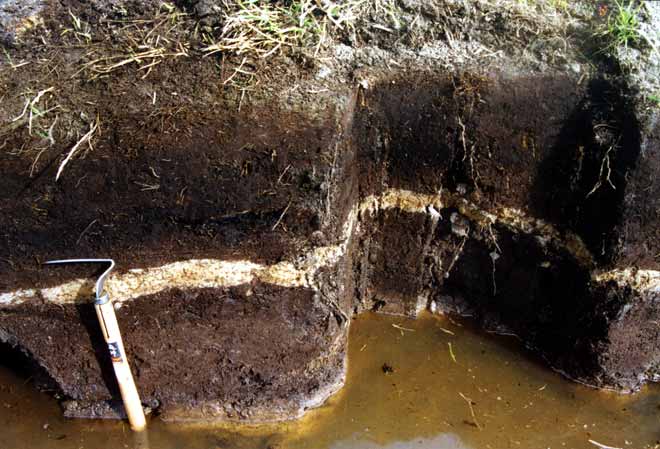
This photograph shows the ash layers that were deposited by the eruptions at Taupō (232 CE ± 15) and Kaharoa (1314 CE ± 12), exposed in peat at Waihī Beach, western Bay of Plenty. The Tāupo ash layer can be seen just above the water level, and the Kaharoa ash layer is the light band in middle of this view. Analysis of ash layers (made up of volcanic glass and other materials) deposited by volcanic eruptions, and of peat and sediment layers, is a method of dating human arrival: the surface layers are youngest, with those underneath becoming progressively older. No direct archaeological evidence of human settlement has ever been found beneath either of these ash layers.
Using this item
University of Waikato
Photograph by David J. Lowe
This item has been provided for private study purposes (such as school projects, family and local history research) and any published reproduction (print or electronic) may infringe copyright law. It is the responsibility of the user of any material to obtain clearance from the copyright holder.








Add new comment